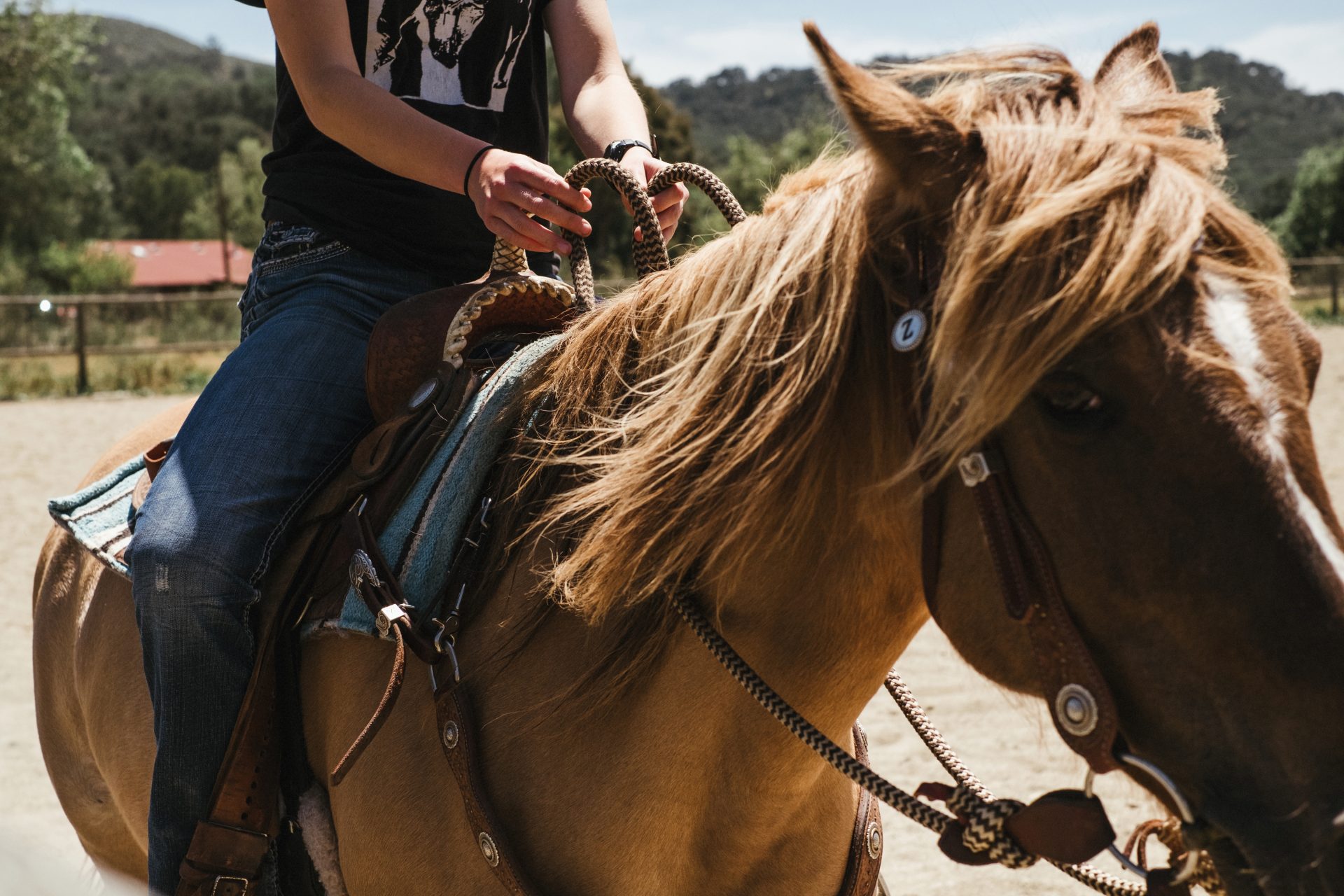Contact Information
-
MAILING : P.O. Box 8, Los Olivos, CA 93441
Director of the Midland Horse Program
Fall 2021
Interview with Regina Butala, Director of Horse Programs and Director of Rangeland Management and Conservation
What is Natural Horsemanship?
Many people have asked me what exactly is Natural Horsemanship. I have a hard time putting this answer in a few words. The reason is that there are so many levels to what we do here in our program. At its core, Natural Horsemanship is creating a partnership with your horse built on trust and a common language. Using the innate characteristics of a horse and horse psychology versus fear and intimidation. It is meant to be a psychology-based training platform for horses and riders, and it consists of five basic concepts. That it’s “psychology-based” means working with the inside of a horse instead of the outside, and the basic concepts are (1) Approach and Retreat, (2) Pressure and Release, (3) Rewards and Consequences, (4) Confidence Building, and (5) Foundation Training.
How do you know when you are doing Natural Horsemanship?
If you listen to a horse, you’re doing Natural Horsemanship. If you use psychology instead of force, you’re doing Natural Horsemanship. If you are willing to train your horse on his timeline, not yours, you’re doing NH. If you don’t care about what others think of you, only what your horse thinks, you’re doing NH. If you consistently test the quality of the horses’ response to you… If you put your horse’s mental, emotional, and physical state before your own ambitions… If your horse runs to you when it sees a halter in your hand and follows you… If your horse is relaxed, connected and willing to please you in it’s work… If you’re looking for the green lights of acknowledgement and acceptance… If you buy a good horse and you keep him a good horse, you’re doing Natural Horsemanship.
How did you find Natural Horsemanship?
When I got my first horse Autumn, I thought all I needed to do was buy a saddle and hop on. Pull the reins to stop and kick her to go. I had no idea about communicating with her in a way that would make sense to her, being that she was a prey animal and I was a predator by nature. She would run off with me on her back out of fear. I learned later that this was her way of escaping pressure.
I struggled for a while trying to get along with her, and all the advice I had gotten was to put a bigger bit in her mouth or tie her down. Those methods did not feel right to me. One day I came to the barn and saw someone riding their horse in the arena bareback and bridleless, no equipment, nothing! I sat in awe as I watched this horse and human look like one connected being operating on invisible cues. I thought to myself, now this makes sense, this looks like true connection and harmony. I need this.
From that day forward I delved into learning training methodologies of Natural Horsemanship studying from a variety of instructors. I learned to read the horse, whether it was in their expressions, their movements, or how they interacted with each other. I learned how to mimic their body language to build communication. I learned that establishing leadership and gaining trust were the two things that I needed with my relationship with Autumn. I saw instant changes in Autumn. These days I can ride her bareback and bridleless. Autumn taught me a lot.

Why does Natural Horsemanship work for the Midland Horse Program?
In my travels, so often I would see schooling horses time and time again grow bored, dull and develop bad habits. This seemed to be due to them having years and years of different riders learning on them using different methodologies or methodologies not built on communication. When I came to Midland 5 years ago, I made a commitment to these horses and the students that their wellbeing will be put before anything. We developed a program that would give both students and the horses consistency and a common language from student to student so that the horses would not shut down and become bored. After all, we have some horses here that have taught over two dozen students how to ride. And countless other horses that have since passed that collectively have taught hundreds of students.
See, we teach students here at Midland how to not only communicate with the horse but to learn how to train each horse based on what that horse needs. This is not an equestrian program; we do not just teach students how to sit a horse. This is a holistic approach to riding, training, ground work, and also getting in touch with how we present ourselves outwardly not only to the horse, but in effect the world around us. Horses are mirrors to our body language and the energy we approach them with. They are honest in how they react.
All the Midland horses are individuals and each have something different to teach a student. They have opinions and personalities. By putting the horse first, not only is it a win for the horse but as a result the students learn way more than just riding.
Does it work with English and Western Disciplines?
Yes, because it is rooted in communication and foundational training, both Western and English riders can learn natural horsemanship. At the end of the day it doesn’t matter what saddle you put on your horse; once you gain rapport and respect from your horse using psychology, anything is possible.
Interested in Becoming a Midlander?
Continue exploring the Midland experience